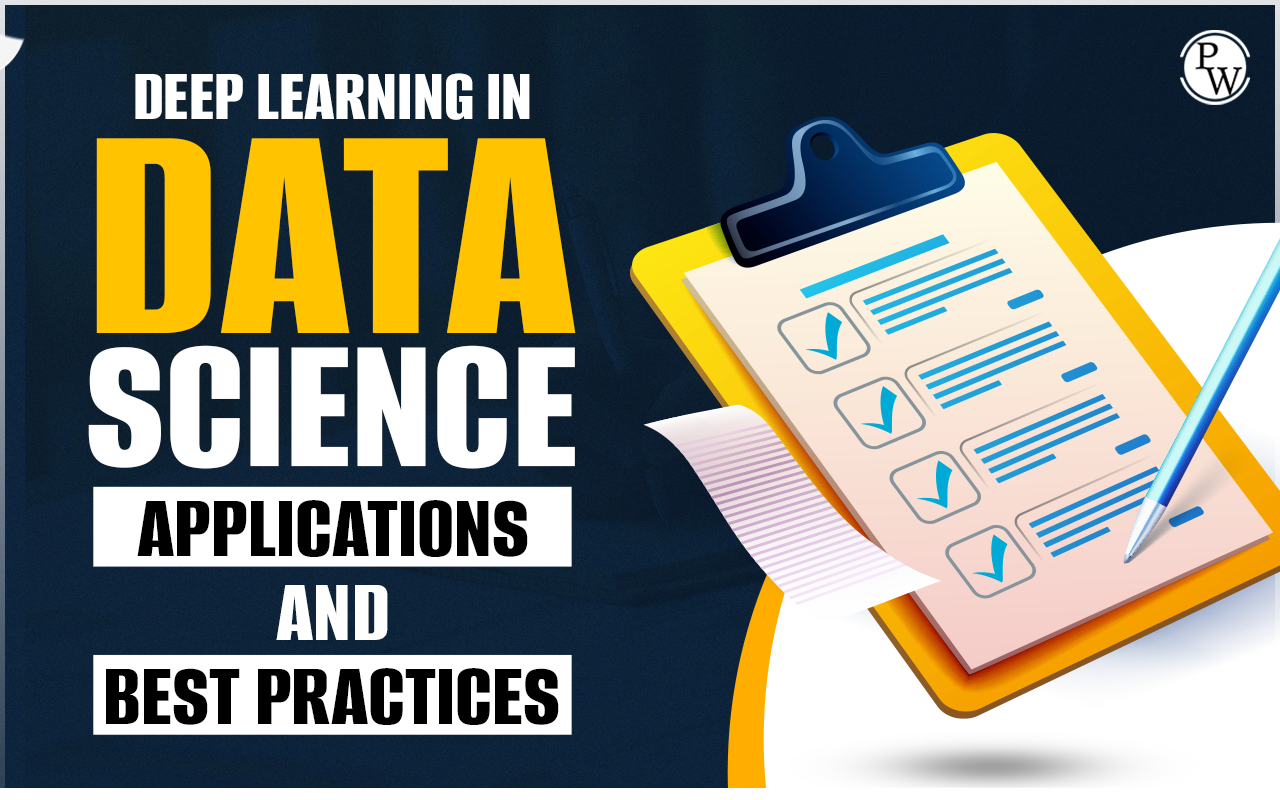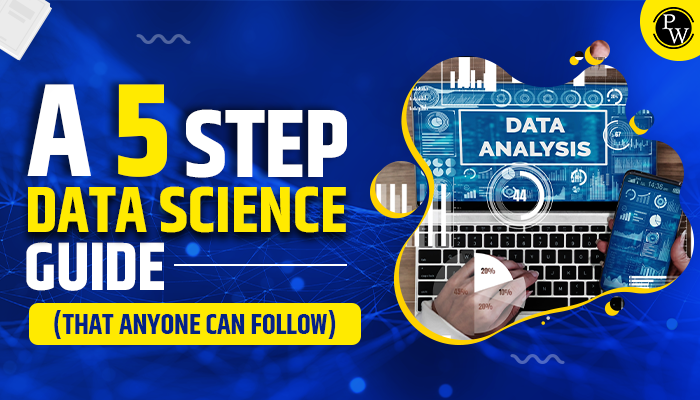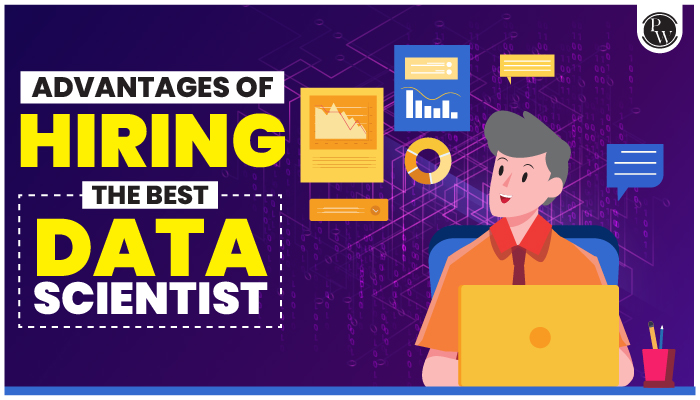Deep Learning in AI: In the vast realm of artificial intelligence (AI), deep learning has emerged as a powerful subset, revolutionising the landscape of data science. With its ability to handle complex tasks and learn patterns from vast datasets, deep learning has become an indispensable tool for various industries. In this blog, we will talk about the fundamentals of deep learning in AI, its types, mechanisms, and its crucial role in the field of data science.
If you want to become a high-paid data scientist, then a Full-Stack Data Science Course could really help you in your career!
What is Deep Learning in AI?

Deep learning, at its core, trains artificial neural networks on extensive data for specific tasks. These networks, composed of interconnected nodes in layers, process and transform input data. The depth, achieved through multiple layers, sets deep learning apart from traditional machine learning. The surge in data growth demands advanced analysis, interpretation, and decision-making techniques. Deep learning is crucial in this scenario, as it enables machines to learn autonomously from large datasets, unveil concealed patterns, and make predictions or decisions without explicit programming.
In contrast to traditional machine learning, which relies on manual feature engineering, deep learning automates this process. It excels in handling unstructured data like images, audio, and text, facilitating more precise and nuanced analysis.
Must Check: 9 Deep Learning Books to check out!
Types of Deep Learning in AI
- Neural Networks
Neural networks serve as the foundational architecture of deep learning. Comprising interconnected nodes, or artificial neurons, these networks process information hierarchically through layers. Input layers receive data, hidden layers process it, and output layers provide the final result. Deep neural networks, with multiple hidden layers, are capable of capturing intricate patterns.
- Convolutional Neural Networks (CNNs)
CNNs are specialised neural networks designed for image processing. Designed for image processing, they employ convolutional layers to learn spatial hierarchies of features, excelling in tasks like image recognition and object detection.
- Recurrent Neural Networks (RNNs)
RNNs are designed to handle sequential data by incorporating feedback loops. This enables them to consider previous information when processing new input, making them suitable for tasks like natural language processing and time-series analysis.
- Generative Adversarial Networks (GANs)
GANs consist of two neural networks, a generator and a discriminator, trained simultaneously through adversarial training. GANs are widely used for generating synthetic data, image-to-image translation, and creating realistic content, such as deepfake videos.
How Deep Learning Works
Neural Network Architecture
Neural networks form the core of deep learning, replicating the intricate layout of the human brain. They comprise layers of synthetic neurons, with each layer dedicated to a precise function in handling information. The input layer receives raw data, which is then passed through hidden layers. These layers use weighted connections and activation functions to transform the input into meaningful representations. Finally, the output layer produces the model’s prediction or classification.
The connections between neurons are defined by weights, which are adjusted during the training process to minimise the difference between predicted and actual outputs. The depth of the network, achieved by stacking multiple hidden layers, is crucial for its ability to learn hierarchical features in the data. This hierarchical representation allows the model to grasp complex patterns that may be challenging for simpler algorithms.
Training and Backpropagation
Deep learning model training follows a sequence: exposure to a labelled dataset, prediction making, and adjustment of internal parameters (like weights) to reduce prediction errors. This cyclic process relies on a feedback mechanism called backpropagation.
In backpropagation, the model computes the error gradient concerning its parameters, using this information to update neural network weights. Iteratively adjusting weights enhances the model’s ability to make precise predictions, with the process relying on optimization algorithms like stochastic gradient descent for fine-tuning parameters to converge to optimal values.
Activation Functions and Layers
Activation functions are crucial components of neural networks, introducing non-linearity to the model. This nonlinearity enables the network to learn complex relationships within the data. Popular activation functions include the Rectified Linear Unit (ReLU), which introduces non-linearity by outputting the input for positive values and zero for negative values.
Layers in a neural network can be categorised into three types: input, hidden, and output layers. The input layer processes the raw data, and the hidden layers progressively extract hierarchical features. The output layer produces the final prediction or classification. The depth and complexity of the network, achieved through stacking multiple hidden layers, contribute to its capacity to understand intricate patterns.
Why is Deep Learning Important?

- Capability for Complex Pattern Recognition
Deep learning’s importance lies in its unparalleled capability to recognize complex patterns within data. Traditional machine learning models may struggle with intricate relationships, especially in large datasets. Deep learning, with its multiple layers of abstraction, excels at capturing and understanding intricate patterns, making it particularly effective in tasks such as image and speech recognition.
Example: Image Recognition
In image recognition, deep learning models can identify and classify objects within images with remarkable accuracy. This capability is invaluable in applications ranging from autonomous vehicles to medical diagnostics.
- Handling Large Datasets
As data multiplies rapidly, conventional machine learning faces challenges with expansive datasets. Conversely, deep learning thrives on abundant data, proving invaluable in navigating today’s data-centric landscape.
Example: Predictive Analytics in E-commerce
In e-commerce, where customer interactions generate massive datasets, deep learning models can analyse past behaviours to predict future preferences. This enables businesses to tailor recommendations and marketing strategies more effectively.
- Enabling Automation and Decision-Making
Deep learning’s ability to automate decision-making processes is a key driver of its importance. In various industries, from finance to manufacturing, where quick and informed decisions are paramount, deep learning models contribute significantly to efficiency and accuracy.
Example: Fraud Detection in Finance
In the financial sector, deep learning models are employed for fraud detection. By learning patterns in transaction data, these models can identify anomalous behaviour indicative of fraudulent activities, mitigating risks and safeguarding financial systems.
- Advancements in Natural Language Processing (NLP)
The progression of deep learning has notably enhanced Natural Language Processing (NLP), underscoring its growing significance. Deep learning models, particularly transformer architectures, have revolutionised language understanding, enabling machines to comprehend and generate human-like text.
Example: Chatbots and Virtual Assistants
Chatbots and virtual assistants powered by deep learning can understand and respond to natural language queries. This not only enhances user experience but also finds applications in customer support and information retrieval.
- Handling Unstructured Data
Traditional machine learning struggles with unstructured data like images, audio, and text. Deep learning, adept at feature extraction and representation learning, excels in confronting the complexities of unorganised information.
Example: Medical Image Analysis
In healthcare, deep learning plays a crucial role in analysing medical images. It facilitates the detection of abnormalities in X-rays, MRIs, and CT scans, supporting medical professionals in precise diagnosis and treatment planning.
Role of Deep Learning in Data Science
- Enhancing Data Analysis and Prediction
Data scientists leverage deep learning to enhance the traditional methods of data analysis and prediction. Deep learning models excel in extracting intricate patterns and relationships from complex datasets, providing a more nuanced understanding of the information at hand. The automated feature extraction capabilities of deep learning models reduce the reliance on manual preprocessing, allowing data scientists to focus on refining models and interpreting results.
The predictive power of deep learning models is particularly valuable in scenarios where traditional approaches may fall short. Whether it’s predicting customer behaviour, stock prices, or disease outbreaks, deep learning contributes to more accurate and reliable predictions by discerning subtle patterns that might go unnoticed using conventional methods.
- Feature Extraction and Dimensionality Reduction
One of the challenges in data science is handling datasets with a high dimensionality and extracting relevant features. Deep learning addresses this challenge by automatically learning and extracting features from raw data. Traditional machine learning often requires manual feature engineering, a time-consuming process that demands domain expertise. In contrast, deep learning models can autonomously identify essential features, enhancing the efficiency of the data science workflow.
Furthermore, deep learning models excel at reducing dimensionality, simplifying datasets while preserving vital information. This not only lessens computational complexity but also facilitates visualising and comprehending the data’s inherent structure. Through automating feature extraction and dimensionality reduction, deep learning expedites exploring and analysing extensive and intricate datasets.
- Addressing Unstructured Data Challenges
A considerable share of today’s information is unstructured, including images, videos, and text. Traditional machine learning methods face challenges in interpreting and deriving meaningful insights from such unstructured data. Deep learning, with its ability to understand and analyse such information, has become indispensable in various data science applications.
In Natural Language Processing (NLP), deep learning models like transformers have redefined the possibilities of language understanding. Sentiment analysis, language translation, and document summarization are areas where deep learning excels. Convolutional Neural Networks (CNNs) prove beneficial in the analysis of images and videos, facilitating tasks like facial recognition, object detection, and scene comprehension.
The proficiency of deep learning in handling unstructured data broadens the scope of data science to fields where raw, diverse, and intricate information prevails. This fosters new possibilities for gaining insights and driving innovation.
Also Read: Data Science vs Machine Learning and Artificial Intelligence
Deep Learning Opportunities and Applications
- Image and Speech Recognition
Deep learning’s influence on image and speech recognition has permeated various sectors. In healthcare, it facilitates precise medical image analysis, aiding in the identification of anomalies in X-rays, MRI scans, and pathology slides. The accuracy and efficiency of diagnostic processes have improved significantly, allowing for earlier detection of diseases.
In the technology realm, speech recognition systems, powered by deep learning, enhance virtual assistants, transcription services, and accessibility features, providing seamless communication and accessibility for diverse user groups.
- Natural Language Processing (NLP)
Natural Language Processing (NLP) has witnessed a revolution due to deep learning. Sentiment analysis, language translation, and chatbot development have all benefited from the capabilities of deep learning models. Transformer architectures, such as BERT and GPT, have redefined language understanding, enabling machines to comprehend and generate human-like text. This has profound implications for customer service, content creation, and cross-language communication, enhancing user experiences across various applications.
- Anomaly Detection
Anomaly detection, a critical aspect in cybersecurity and fraud prevention, relies on deep learning for identifying irregular patterns within vast datasets. In cybersecurity, deep learning models learn the normal behaviour of systems and users, enabling the detection of anomalies indicative of potential security threats. Similarly, in finance, these models can analyse patterns in transaction data to flag suspicious activities, enhancing the accuracy and efficiency of fraud prevention mechanisms.
- Predictive Analytics
Predictive analytics powered by deep learning is transforming decision-making processes across industries. In retail, deep learning models forecast consumer trends, enabling businesses to optimise inventory and offer personalised recommendations. In manufacturing, predictive maintenance models analyse data from sensors to anticipate equipment failures, minimising downtime and reducing maintenance costs. This proactive approach to maintenance enhances operational efficiency and extends the lifespan of critical machinery.
Read more: Predictive Modeling: Revolutionizing Decision-Making with AI
- Autonomous Systems
In the automotive sector, deep learning algorithms empower self-driving vehicles to make instantaneous decisions, navigate intricate surroundings, and identify and react to obstacles. The incorporation of deep learning technologies in transportation and logistics extends to optimising routes, enhancing efficiency, cutting fuel consumption, and upgrading overall supply chain management.
- Drug Discovery and Genomics
In the healthcare sector, deep learning is playing a pivotal role in drug discovery and genomics research. Deep learning models analyse vast biological datasets, identifying potential drug candidates and accelerating the drug discovery process. Genomics research, including the analysis of DNA sequences and the understanding of genetic variations, is enhanced by deep learning techniques, contributing to personalised medicine and targeted treatment approaches.
- Financial Modeling
Deep learning finds extensive applications in the financial sector, particularly in modelling complex financial instruments and predicting market trends. Algorithmic trading strategies leverage deep learning to analyse historical market data and make real-time investment decisions. Portfolio optimization, risk assessment, and fraud detection in financial transactions are areas where deep learning contributes to making more informed and secure financial decisions.
History of Deep Learning
- Milestones in Deep Learning Development
The roots of deep learning trace back to the 1940s, but significant progress accelerated in the 21st century. Milestones include the development of neural networks, backpropagation algorithms, and breakthroughs like AlexNet in 2012, which marked a turning point in image classification accuracy.
- Evolution of Deep Learning Algorithms
The evolution of deep learning algorithms has been marked by innovations in neural network architectures and training methods. From the early days of perceptrons to the introduction of convolutional and recurrent architectures, the field has witnessed continuous refinement and advancement.
- Notable Breakthroughs and Achievements
Notable breakthroughs, such as AlphaGo’s victory in 2016 and the development of GPT-3 in 2020, showcase the expanding capabilities of deep learning. These achievements underscore the adaptability of deep learning models across diverse domains, from gaming to natural language understanding.
Who’s Using Deep Learning?
Retail
- Personalised Shopping Experiences:
- Deep learning algorithms analyse customer preferences and behaviours to offer personalised product recommendations, enhancing the overall shopping experience.
- Recommendation systems, powered by deep learning, provide targeted suggestions, improving customer engagement and increasing sales.
- Inventory Management:
- Predictive analytics, facilitated by deep learning models, optimise inventory levels by forecasting demand patterns.
- Retailers can minimise overstock and stockouts, ensuring efficient supply chain management and reducing carrying costs.
Banking
- Fraud Detection:
- Deep learning models analyse vast datasets of transactions to detect patterns indicative of fraudulent activities.
- Real-time monitoring allows financial institutions to identify and respond swiftly to potential security threats.
- Risk Assessment:
- Deep learning contributes to more accurate risk assessment in lending by evaluating creditworthiness based on diverse data sources.
- Improved risk models enable banks to make informed decisions, mitigating potential financial losses.
Manufacturing
- Quality Control:
- Deep learning is employed in quality control processes to detect defects and deviations in manufacturing processes.
- Automated inspection systems enhance product quality and reduce the likelihood of faulty products reaching consumers.
- Predictive Maintenance:
- By analysing sensor data, deep learning models predict equipment failures before they occur, enabling proactive maintenance.
- This minimises downtime, extends the lifespan of machinery, and optimises maintenance costs.
Healthcare
- Medical Image Analysis:
- Deep learning algorithms excel in analysing medical images, aiding in the detection and diagnosis of diseases such as cancer.
- Pathology slides, X-rays, and MRI scans benefit from enhanced accuracy in identifying subtle anomalies.
- Disease Diagnosis and Prognosis:
- Deep learning models assist in diagnosing diseases by analysing patient data and identifying relevant patterns.
- Prognostic models predict disease progression, enabling personalised treatment plans for better patient outcomes.
Transportation and Logistics
- Autonomous Vehicles:
- Deep learning plays a pivotal role in enabling autonomous vehicles to navigate complex environments, make real-time decisions, and ensure passenger safety.
- Object detection and recognition systems contribute to the development of self-driving technology.
- Route Optimization:
- Logistics companies leverage deep learning for route optimization, minimising fuel consumption, reducing delivery times, and improving overall operational efficiency.
- Enhanced logistics contribute to cost savings and environmental sustainability.
Government
- Security and Surveillance:
- Facial recognition systems, powered by deep learning, assist law enforcement agencies in identifying individuals in crowded spaces.
- Video analytics enhance security measures, aiding in the prevention of criminal activities.
- Fraud Prevention:
- Governments employ deep learning to detect fraudulent activities in public programs and financial transactions.
- Advanced analytics contribute to maintaining the integrity of government services and reducing financial fraud.
Utilities
- Smart Grid Management:
- Deep learning models analyse data from smart grids to optimise energy distribution, predict demand, and improve overall grid efficiency.
- This leads to more sustainable energy practices and cost-effective management of resources.
- Predictive Maintenance:
- Infrastructure such as power grids benefits from predictive maintenance, minimising downtime and improving overall reliability.
- Deep learning contributes to a proactive approach in managing utility systems.
Also Check: Role of Data Science in Risk Management 2023
Conclusion
In conclusion, deep learning’s impact on data science is profound and wide-ranging. From its foundational principles to its diverse applications across industries, deep learning continues to shape the future of AI and data-driven decision-making. As technology advances, the synergy between deep learning and data science promises even more innovative solutions and opportunities for the ever-growing world of information analysis and interpretation.
Are you ready to take your data science skills to the next level? The PW Skills Full Stack Data Science Pro Course is designed to equip you with the expertise you need to tackle complex data challenges and make a real impact in any industry. Join our program and gain the skills and knowledge to become a leading data scientist.
FAQs
How does deep learning differ from traditional machine learning in data science?
Deep learning distinguishes itself by automating feature extraction and learning hierarchical representations through multiple layers of neural networks. This stands in contrast to traditional machine learning, which often requires manual feature engineering and struggles with the complexity of unstructured data.
What are the key challenges addressed by deep learning in data science?
Deep learning addresses challenges such as handling large datasets, automating feature extraction, and processing unstructured data (e.g., images, text). Its ability to discern complex patterns and automatically learn from vast amounts of information makes it a powerful tool in data science.
How does deep learning contribute to predictive analytics in data science?
Deep learning enhances predictive analytics by automatically identifying intricate patterns in historical data. This capability allows data scientists to make more accurate forecasts and predictions, ranging from demand forecasting in retail to anticipating equipment failures in manufacturing.
Can deep learning be applied to industries beyond technology and finance?
Absolutely. Deep learning has found applications in diverse industries. For instance, in healthcare, it aids in medical image analysis and personalised medicine. In transportation, it powers autonomous vehicles and optimises logistics. The adaptability of deep learning extends its impact across sectors like healthcare, manufacturing, government, and utilities.
What role does deep learning play in addressing the challenges of unstructured data in data science?
Deep learning is instrumental in handling unstructured data challenges, such as images, videos, and text. In Natural Language Processing (NLP), deep learning models like transformers excel in tasks like sentiment analysis and language translation. Convolutional Neural Networks (CNNs) enable the analysis of images and videos, including facial recognition and object detection.





